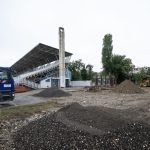In addition to regular tourist hotspots, religious sites also attract more and more visitors.
More than 20 popular Marian shrines in Croatia will attract many visitors tomorrow when Croatia marks the feast of the Assumption of Mary. The largest number of the faithful is expected at the most important shrines in Marija Bistrica, Sinj, Trsat, Aljmaš, Pleternica, Nin and Remete, reports Index.hr on August 14, 2017.
In the last several years, according to estimates from local tourist boards and the shrines themselves, more than half a million visitors-pilgrims visited shrines for the feast of the Assumption of Mary. Similar numbers are expected this year as well. At some venues, like Marija Bistrica, there are more and more pilgrims who come to a couple of days prior to the holiday itself, so they stay longer and seek accommodation at local tourist facilities.
Although most visitors to the shrines are Croatian citizens, there are also many foreign tourists, especially in the shrines on the Adriatic coast and in places close to the coast. On the other hand, there is also a tradition of Croatian pilgrims travelling to European Marian shrines such as Fatima, Lourdes and several shrines in neighbouring countries, such as those in Italy and Bosnia and Herzegovina.
At a recent international conference on religious tourism held in Italy, one of the world’s leading pilgrim destinations, it was pointed out that there are new needs of travellers which visit destinations for spiritual and religious reasons. “This conference also highlighted the need for greater attention which should be devoted to religious tourism in many countries, including Croatia, which has been marked as a country of great potential for this segment, due to its sacred heritage and traditions, and well-developed tourist infrastructure,” said secretary general of the Association of the Croatian Independent Travel Agents (UNPAH) Vlasta Klarić, who was among about a hundred participants from 15 countries which attended the conference.
Many UNPAH members are involved with religious tourism, organising trip both in Croatia and abroad. Klarić estimated that the religious tourism market in Europe was worth about 18 billion euros a year and was growing slightly every year.
She believes that this travel segment should have a more significant role in the country’s tourism promotion because this type of tourism is linked to culture, wines, gastronomy and other elements of the tourist offer, while also includes visits to monasteries, cathedrals, shrines and other sacral venues.
“In dealing with religious tourism, it should be borne in mind that these are very complex trips to organise, with customers demanding responsible organisation and service, without neglecting the basic motive of travel, which is spirituality and faith. Such visits must also include a responsible attitude toward destinations and sustainability. It is also necessary to combine marketing with the idea of the durability of the non-material heritage of local communities, and the goal is not to exclude anyone,” said Klarić.
She quoted data from the Italian National Institute for Tourism that religious tourism attracts more than 5.6 million visitors annually to the country, of which 3.3 million are foreign tourists, with 44.4 percent of those visitors relying on organization of travel through intermediaries, tour operators and travel agencies, while about 33 percent prefer to go with their partners, and 20 percent choose organized tours.
Translated from Index.hr.








